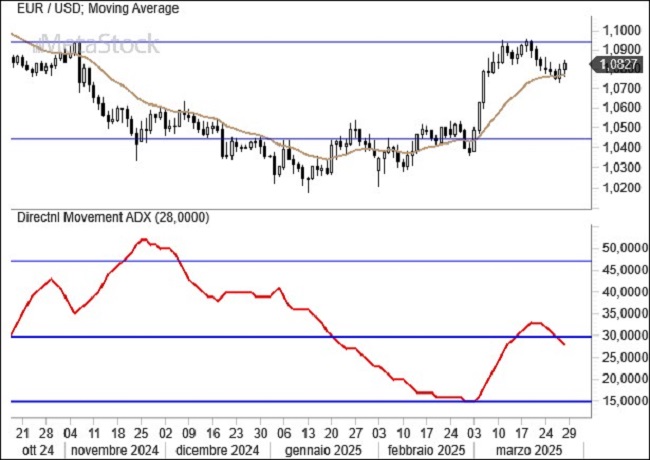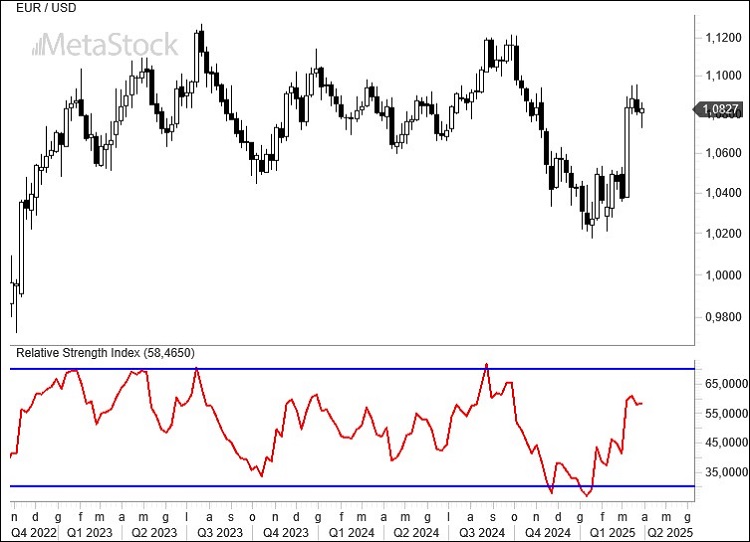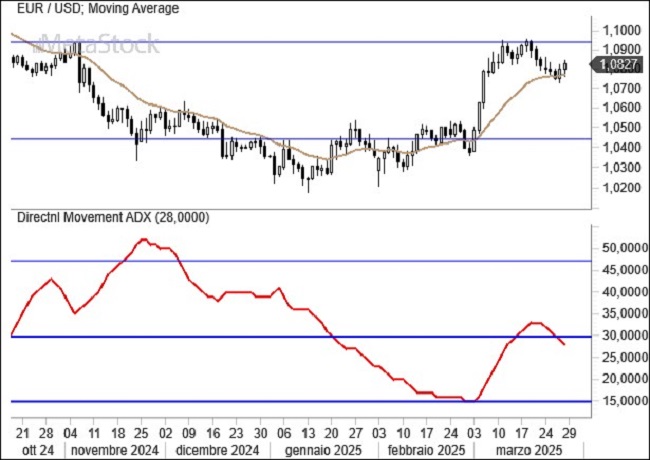- Trump’s tariffs are coming, and it will be crucial to observe how the markets react after April 2, as they have thus far looked pessimistically at the tycoon’s future decisions. However, the U.S. economy continues to show encouraging signs.
- Europe continues to churn out stagnating macroeconomic data, awaiting clarity on the impact of tariffs, the ongoing trade war, and military spending to counter the Russian threat, coupled with the U.S.’s disengagement from the continent. Lagarde is likely to leave rates unchanged in April.
- As predicted, EUR/USD is experiencing a slight pullback from resistance levels around 1.09/1.10, but it remains close to critical levels from a tactical standpoint for any further advances.
Trump’s Tariffs and their Impact on Markets
The day of American liberation, as Trump referred to it on April 2, has arrived. All the speculation about the trade barriers the United States wants to impose on economic regions with which it runs significant trade imbalances may soon find an explanation. Or perhaps not, given the past instances of tariffs that were announced and then withdrawn. With Trump, surprises are an everyday occurrence, so it seems somewhat pointless to report the news and rumors that preceded this phase. We will comment on the developments next week, for now noting only the 25% tariff imposed on imported cars entering the U.S. Europe and Japan are the most affected economic regions, given their considerable exports of vehicles to the U.S. At the moment, leading indicators like the PMI suggest that the U.S. is holding up economically, outperforming Europe, Australia, and Japan. Japan, in fact, saw its leading index drop below 50 points, justifying the Bank of Japan’s decision not to raise rates, despite another inflation figure for Tokyo confirming that consumer price pressures are still present. The currency market remains cautious, although speculators have increased their long positions on the euro, pound, and yen in recent weeks, betting that the dollar will be the inevitable victim of Trump’s policies. The Federal Reserve remains cautious and patient, allowing the greenback to avoid breaching certain technical levels that would signal weakness. The GDP deflator, the Fed’s preferred inflation measure, rose to 2.8% in the latest reading, further confirming that inflation remains uncontained. Tariffs could exacerbate this outlook. In Europe, it will be interesting to see how the European Central Bank approaches the April monetary policy meeting after the inflation data release. The prevailing sentiment is that Frankfurt will stay on the sidelines, awaiting more details on the trade war and negotiations.
Technical Analysis: EUR/USD Faces Key Resistance Amid Bullish Momentum
The bullish trend in EUR/USD encountered expected resistance around the 1.09/1.10 price zone. The trend strength indicator, ADX, above 30 signaled a progressive increase in buyers, a trend also confirmed by speculators’ long euro positions, which have recently turned positive in futures markets after several months. A period of consolidation was to be expected, but it now requires EUR/USD to demonstrate how much the market is willing to test the resistance levels. The 20-day moving average appears to be the ideal launching pad for such an attempt.

We are reluctant to declare the bullish phase of EUR/USD over. Typically, the pair has reached an overbought position on the weekly charts during the previous primary high formations. From this perspective, we are still not there yet. Therefore, the door remains open for renewed interest in the resistance range around 1.10, with a potential stretch to 1.12, which currently seems to be the most optimistic scenario for the euro.



Leave a Reply
You must be logged in to post a comment.